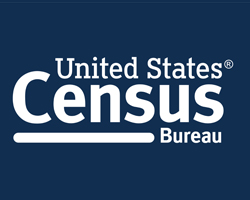SPRINGFIELD – The Chairs of the House and Senate Redistricting Committees are encouraging Illinois residents to provide additional input in the redistricting process by taking advantage of a new online map making portal to draw and submit proposed legislative boundaries before May 10.
The online portal was established by the Illinois Senate Democratic Caucus and the Illinois House Democratic Caucus to allow for greater public participation in redistricting, which occurs once every ten years to adjust legislative boundaries in response to population shifts. It is the first time in Illinois history the public has been able to go online to craft suggested maps, which will be reviewed as part of the public record. The Public Drawing Portal can be accessed at www.ilsenateredistricting.com and www.ilhousedems.com/redistricting.
“We are working hard to ensure all voices are heard during this redistricting process. I encourage anyone who wishes to submit a proposed map to get their entries in sooner rather than later so there is ample time for them to be reviewed and considered,” said Sen. Omar Aquino, D-Chicago, Chair of the Senate Redistricting Committee. “This is a historic opportunity for residents across Illinois to have their voices heard.”
The Public Drawing Portal builds on efforts by Democrats to seek public input on the map making process, including more than 40 hearings to gather information from stakeholders in all of Illinois’ 102 counties as the General Assembly works toward its constitutional deadline of June 30 to craft a fair map
“The House and Senate Redistricting Committees held public hearings across the state to give residents a chance to have their voices heard as the redistricting process begins,” said Rep. Elizabeth Hernandez, D-Cicero, Chair of the House Redistricting Committee. “We have received helpful input from residents on communities of interest and other considerations, and the Public Drawing Portal offers residents further opportunities to engage with the process like never before.”
While each state has a unique process for redistricting, legislative districts must conform to several constitutional and statutory standards, including the Voting Rights Act of 1965. The Voting Rights Act provides the right of citizens to vote shall not be denied on abridged based on race or color and prohibits the drawing of redistricting plans that results in the denial or abridgement of the right to vote based on race, color or membership in a language minority.
Building on that federal law, Illinois Democrats spearheaded the passage and implementation of the Illinois Voting Rights Act in 2011, which also ensures redistricting plans are crafted in a way that preserves clusters of minority voters if they are of size or cohesion to exert collective electoral power.
In Illinois, legislative redistricting maps must also meet four requirements including: districts must be substantially equal in population; districts must be configured in such a way as to provide adequate representation to minorities and other special interests protected by state and federal law; districts must be compact and contiguous; and maps must meet all legal requirements regarding political fairness.











